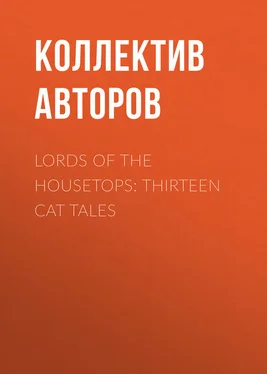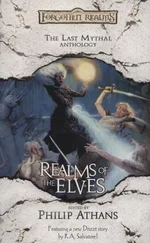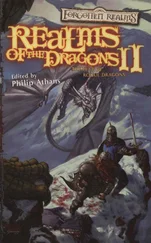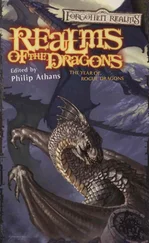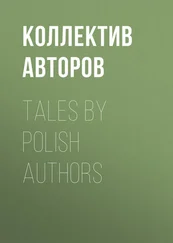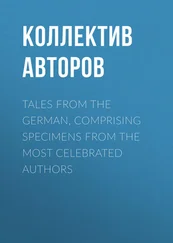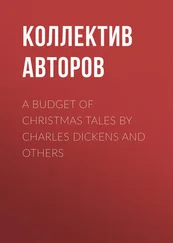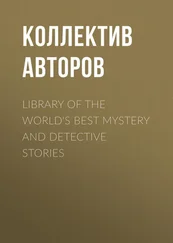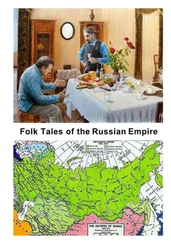Коллектив авторов - Lords of the Housetops - Thirteen Cat Tales
Здесь есть возможность читать онлайн «Коллектив авторов - Lords of the Housetops - Thirteen Cat Tales» — ознакомительный отрывок электронной книги совершенно бесплатно, а после прочтения отрывка купить полную версию. В некоторых случаях можно слушать аудио, скачать через торрент в формате fb2 и присутствует краткое содержание. Жанр: literature_19, foreign_antique, foreign_prose, на английском языке. Описание произведения, (предисловие) а так же отзывы посетителей доступны на портале библиотеки ЛибКат.
- Название:Lords of the Housetops: Thirteen Cat Tales
- Автор:
- Жанр:
- Год:неизвестен
- ISBN:нет данных
- Рейтинг книги:4 / 5. Голосов: 1
-
Избранное:Добавить в избранное
- Отзывы:
-
Ваша оценка:
- 80
- 1
- 2
- 3
- 4
- 5
Lords of the Housetops: Thirteen Cat Tales: краткое содержание, описание и аннотация
Предлагаем к чтению аннотацию, описание, краткое содержание или предисловие (зависит от того, что написал сам автор книги «Lords of the Housetops: Thirteen Cat Tales»). Если вы не нашли необходимую информацию о книге — напишите в комментариях, мы постараемся отыскать её.
Lords of the Housetops: Thirteen Cat Tales — читать онлайн ознакомительный отрывок
Ниже представлен текст книги, разбитый по страницам. Система сохранения места последней прочитанной страницы, позволяет с удобством читать онлайн бесплатно книгу «Lords of the Housetops: Thirteen Cat Tales», без необходимости каждый раз заново искать на чём Вы остановились. Поставьте закладку, и сможете в любой момент перейти на страницу, на которой закончили чтение.
Интервал:
Закладка:
Various
Lords of the Housetops: Thirteen Cat Tales
Thanks are due to the following authors and publishers for permission to use the stories contained in this book:
Harper and Brothers and Mrs. Mary E. Wilkins Freeman for The Cat , from Understudies (copyright 1901 by Harper and Brothers).
Houghton Mifflin Co., for Zut , from Zut and Other Parisians (copyright 1903 by Guy Wetmore Carryl).
E. P. Dutton and Co., for A Psychical Invasion , from John Silence .
Doubleday, Page and Co., and Booth Tarkington for Gipsy, from Penrod and Sam (copyright 1916 by Doubleday, Page and Co.).
Harper and Brothers and the Mark Twain Estate for Dick Baker's Cat , from Roughing It (copyright 1871-1899 by the American Publishing Co.; copyright 1899 by Samuel L. Clemens; copyright 1913 by Clara Gabrilowitsch).
Harper and Brothers for Madame Jolicœur's Cat , from From the South of France (copyright 1912 by Harper and Brothers).
George H. Doran Co., for A Friendly Rat , from The Book of a Naturalist (copyright 1919 by the George H. Doran Co.).
The Four Seas Co., and Peggy Bacon for The Queen's Cat , from The True Philosopher (copyright 1919 by the Four Seas Co.).
Houghton Mifflin Co., for Calvin , from My Summer in a Garden (copyright 1870 by Fields, Osgood and Co.; copyright 1898 by Charles Dudley Warner; copyright 1912 by Susan Lee Warner).
In the essay and especially in poetry the cat has become a favourite subject, but in fiction it must be admitted that he lags considerably behind the dog. The reasons for this apparently arbitrary preference on the part of authors are perfectly easy to explain. The instinctive acts of the dog, who is a company-loving brute, are very human; his psychology on occasion is almost human. He often behaves as a man would behave. It is therefore a comparatively simple matter to insert a dog into a story about men, for he can often carry it along after the fashion of a human character.
But, as Andrew Lang has so well observed, literature can never take a thing simply for what it is worth. "The plain-dealing dog must be distinctly bored by the ever-growing obligation to live up to the anecdotes of him… These anecdotes are not told for his sake; they are told to save the self-respect of people who want an idol, and who are distorting him into a figure of pure convention for their domestic altars. He is now expected to discriminate between relations and mere friends of the house; to wag his tail at God Save the Queen ; to count up to five in chips of fire-wood, and to seven in mutton bones; to howl for all deaths in the family above the degree of second cousin; to post letters, and refuse them when they have been insufficiently stamped; and last, and most intolerable, to show a tender solicitude when tabby is out of sorts." The dog, indeed, for the most part, has become as sentimental and conventional a figure in current fiction as the ghost who haunts the ouija board or the idealistic soldier returned from the wars to reconstruct his own country.
Now the cat, independent, liberty-loving, graceful, strong, resourceful, dignified, and self-respecting, has a psychology essentially feline, which has few points of contact with human psychology. The cat does not rescue babies from drowning or say his prayers in real life; consequently any attempt to make him do so in fiction would be ridiculous. He has, to be sure, his own virtues. To me these are considerably greater than those of any other animal. But the fact remains that the satisfactory treatment of the cat in fiction requires not only a deep knowledge of but also a deep affection for the sphinx of the fireside. Even then the difficulties can only be met in part, for the novelist must devise a situation in which human and feline psychology can be merged. The Egyptians probably could have written good cat stories. Perhaps they did. I sometimes ponder over the possibility of a cat room having been destroyed in the celebrated holocaust of Alexandria. The folk and fairy tales devoted to the cat, of which there are many, are based on an understanding, although often superficial, of cat traits. But the moderns, speaking generally, have not been able to do justice, in the novel or the short story, to this occult and lovable little beast.
On the whole, however, the stories I have chosen for this volume meet the test fairly well. Other cat stories exist, scores of them, but these, with one or two exceptions, are the best I know. In some instances other stories with very similar subjects might have been substituted, for each story in this book has been included for some special reason. Mrs. Freeman's story is a subtle symbolic treatment of the theme. In The Blue Dryad the cat is exhibited in his useful capacity as a killer of vermin. A Psychical Invasion is a successful attempt to exploit the undoubted occult powers of the cat. Poe's famous tale paints puss as an avenger of wrongs. In Zut the often inexplicable desire of the cat to change his home has a charming setting. Booth Tarkington in Gipsy has made a brilliant study of a wild city cat, living his own independent life with no apparent means of support. I should state that the ending of the story, which is a chapter from Penrod and Sam , is purely arbitrary. Gipsy, you will be glad to learn, was not drowned. He never would be. If you care to read the rest of his history you must turn to the book from which this excerpt was torn. There seem to be three excellent reasons for including Mark Twain's amusing skit: in the first place it is distinctly entertaining; in the second place Mr. Clemens adored cats to such an extent that it would be impertinent to publish a book of cat stories without including something from his pen; in the third place Dick Baker's Cat 1 1 Those who have attempted to form anthologies or collections of stories similar to this know what difficulties have to be overcome. The publishers of Mark Twain's works were at first unwilling to grant me permission to use this story. I wish here to take occasion to thank Mrs. Clara Clemens Gabrilowitsch and Mr. Albert Bigelow Paine for their successful efforts in my behalf. I am sure that the readers of this book will be equally grateful.
celebrates an exceedingly important feline trait, the inability to be duped twice by the same phenomenon. It is interesting to record that Theodore Roosevelt liked this yarn so much that he named a White House cat, Tom Quartz.
Thomas A. Janvier's narrative reveals the cat in his luxurious capacity as a treasured pet, and Mr. Alden's story is a good example of the kind of tale in which a friendless human being depends upon an animal for affection. There are, of course, many such, but in most cases dogs are the heroes. The Queen's Cat is a story about an ailurophobe, or a cat-fearer, and his cure. Mr. Hudson's contribution is fact rather than fiction. I have included it because it is delightful and because it is the only good example available of that sort of story in which a cat becomes friendly with a member of an enemy race, although in life the thing is common. Mr. Warner's Calvin , too, certainly is not fiction, but as it shares with Pierre Loti's Vies de deux chattes the distinction of being one of the two best cat biographies that have yet been written I could not omit it.
There remains The Afflictions of an English Cat which, it will be perceived by even a careless reader, is certainly a good deal more than a cat story. It is, indeed, a satire on British respectability, but we Americans of today need not snicker at the English while reading it, for the point is equally applicable to us. When I first run across this tale while preparing material for my long cat book,
Читать дальшеИнтервал:
Закладка:
Похожие книги на «Lords of the Housetops: Thirteen Cat Tales»
Представляем Вашему вниманию похожие книги на «Lords of the Housetops: Thirteen Cat Tales» списком для выбора. Мы отобрали схожую по названию и смыслу литературу в надежде предоставить читателям больше вариантов отыскать новые, интересные, ещё непрочитанные произведения.
Обсуждение, отзывы о книге «Lords of the Housetops: Thirteen Cat Tales» и просто собственные мнения читателей. Оставьте ваши комментарии, напишите, что Вы думаете о произведении, его смысле или главных героях. Укажите что конкретно понравилось, а что нет, и почему Вы так считаете.
